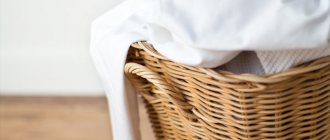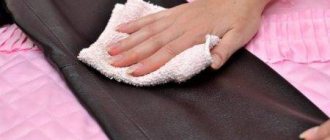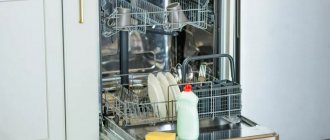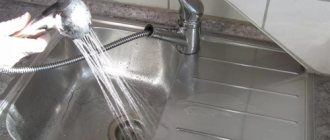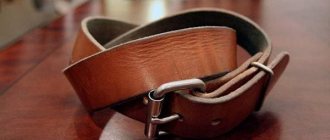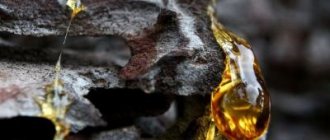Cups, plates, saucers, and other kitchen utensils covered with yellow spots and stains look unattractive. Eating or drinking from such containers is unhygienic and unsafe. The plaque that appears must be removed, and it is not at all necessary to use aggressive chemical compounds.
At home, you can quickly remove yellowness using improvised means and folk recipes. “Chemistry” will only be needed to clean old dirt, although experienced housewives have their own “weapons” for such cases.
Reasons for the appearance of yellowness on dishes
Why do dishes turn yellow and how to clean them until they shine? When faced with the problem of how to wash plates from yellow plaque, most housewives ask a completely logical question: what is the reason for its appearance and how to clean the dishes without spoiling the pattern or scratching the surface? In addition, many women are trying to understand whether it is mold and what harm such dirt can cause to human health?
In fact, yellowness sooner or later appears on any dishes, and there are several main reasons for such contamination:
- the use of hard water, which usually comes from city water systems;
- low-quality detergents;
- lack of hot water, which leads to natural problems with fat removal;
- rush when washing dishes, which undoubtedly affects the quality of this procedure.
But still, the question of how to clean plates from yellow plaque does not lose its relevance. Of course, thoroughly washing all kitchen utensils with a strong product from well-known manufacturers will help you cope with the problem. However, there are also a number of proven folk methods that will give results no worse.
Aluminum utensils
Aluminum cookware is not easy to keep in perfect condition - stains form on the surface of the metal upon contact with certain substances and products, and stains from hard water.
Pots and other utensils made of aluminum should not be treated with a cleaning agent with abrasive properties (chalk, pemolux, salt, sand), steel wool, brushes, or melamine sponge, as this will cause scratches on the surface. Chlorine-containing detergents are also prohibited - they cause dark stains on the metal.
Aluminum dishes are washed with a soft cloth, a foam sponge, foam or gel detergents, soap shavings, and a solution of laundry soap.
To remove dark spots, use acid - lemon juice or citric acid solution, white or apple cider vinegar. Effective remedies also include ammonia and cream of tartar. The list of folk remedies includes cucumber and cabbage pickle, Coca-Cola, kefir. Also, stains are wiped with a fresh cut of the onion.
To clean aluminum utensils, you can use white toothpaste and soda. Silicate (stationery) glue will help add shine to the pots - boil the dishes in an aqueous solution for 12-20 minutes, allow to cool without removing them from the container, and then rinse with cool water.
Folk methods for removing yellow plaque from plates
Today, many housewives prefer to minimize the use of household chemicals, giving preference to effective, cost-effective, and most importantly, safe folk methods. Here are those that will help you quickly and completely remove yellowness from your plates.
Method No. 1 - Soaking in soda solution
To quickly remove traces of old grease from the surface of plates, the dishes should be soaked in a hot cleaning solution, which is prepared according to the following instructions:
- A large container is filled with clean, hot water.
- For every liter of water in the pan, add 3 tbsp. l. soda
- The dishes covered with an unpleasant coating are immersed in the container for an hour.
- After the specified time has passed, the plates are removed from the soda solution, thoroughly cleaned with a kitchen sponge and washed under warm water.
Important! The most effective breakdown of fat occurs in hot water, so the temperature of the solution should be maintained by adding boiling water. You can also enhance the effect of the cleaning composition by adding a small amount of gel dishwashing detergent.
Method No. 2 - Cleaning with citric or acetic acid
In deciding how to clean the backs of plates, acetic or citric acid, which is probably found in every kitchen, will help you. To achieve the desired result, use one of the proposed means according to the following algorithm:
- Carefully apply the acid to the back of the plate.
- Wait for 10-15 minutes.
- Wash the dishes thoroughly with a kitchen sponge and your usual detergent.
- Rinse plates in warm running water.
Method number 3 - Baking soda
The white powder known to every housewife - soda - will help in the fight against unpleasant deposits on plates. This substance will probably be found in every kitchen, because its scope is surprisingly wide. To achieve the desired cleaning result, follow these instructions:
- Wet dirty dishes generously with warm water, or better yet, soak them in a sufficiently large basin for a while.
- Apply baking soda to a kitchen sponge and apply the cleaning agent to problem areas.
- Thoroughly rinse cleaned plates under warm running water.
Important! In terms of its cleansing properties, soda is in no way inferior to the chemical compositions popular today. But it is known for its environmental cleanliness and safety for human health.
Method number 4 - Mustard powder
At first glance, it may seem that with the help of mustard it is almost impossible to clean dishes from frozen fat and the residue remaining from it. However, it was mustard powder that was used for many generations as an effective and, most importantly, safe cleaning agent.
To achieve the highest quality results, it is recommended to use mustard powder as follows:
- Place the dishes covered with unpleasant deposits in a large container.
- Fill the basin to the top with warm water, add a little mustard powder.
- Leave the kitchen utensils in this state for 30-40 minutes.
- After the specified time has passed, wash the dishes as usual.
Enameled products
It is not recommended to clean enamel cookware with abrasives - over time, the enamel coating gets scratched, as a result, plaque settles on the surface faster, yellow and dark spots appear that are difficult to remove.
To clean enamel-coated cookware, use baking soda and regular detergents. Soda ash will help to bleach an enamel pan, bowl or ladle - soak the dishes for an hour and a half in a very hot solution (25 g of soda ash is required for 1 liter of water).
A persalt solution (1 tsp per 3 liters of water) is also suitable for bleaching - you need to boil enamel products in it for an hour and let it cool along with the solution. Then the dishes are thoroughly washed with warm water.
Useful tips
Although all folk methods of cleaning plates at home involve the use of improvised means that are harmless to health, when using them you should still adhere to basic safety rules:
- When using any of the products, protect the skin of your hands with rubber gloves. They will help prevent allergic reactions and irritating effects of acids.
- To quickly get rid of the pungent odor of the substances used, open the kitchen window before starting cleaning procedures.
- To use folk cleaning remedies, it is best to take a new sponge or use a tool that you will not need in the future.
Ceramics
Plaque forms on ceramic dishes over time, and it accumulates especially quickly in porcelain folds of plates and cups of complex configuration. The appearance of yellowness can be avoided by washing dishes in the dishwasher using special detergents.
If you don’t have a dishwasher, yellow stains from plates can be removed using:
When using powders or pastes, use an abrasive cloth or the appropriate side of a double-layer sponge to enhance the effect. You can also use regular dishwashing detergent, but wipe off dirt not with a foam sponge, but with a brush with stiff polymer bristles.
Steel wool should only be used to clean surfaces without a pattern, so as not to damage the paint.
We will separately consider how to bleach dishes if there is a lot of them. To simplify the task, use washing powder for hand washing. The powder is dissolved in a container with very hot water, then all ceramic plates and cups are immersed there for 2-3 hours. Then thoroughly wash each item in warm water - there should be no traces of powder left on the surface.
Dishes in a solution of washing powder will be cleaned faster if you boil them in a metal container. It is enough to boil for 15-20 minutes. When cleaning by boiling, washing powder can be replaced with baking soda if the products do not have gold plating. Please note that the dishes cannot be removed immediately; let them cool along with the solution.
How to get rid of grease on a kettle
During cooking, fat particles may fly into surrounding objects. If the kettle is covered with a greasy coating, you need to wash it with one of the following products:
- baking soda;
- a mixture of nine percent table vinegar, table salt and soda;
- tooth powder.
All you need to do is thoroughly rub the stained surface and rinse with water.
Laundry soap
Wash the plates with a soapy sponge and rinse under cold water. Treat grooves, patterns, and other hard-to-reach places with a soft toothbrush.
Soap can also be used to clean a dirty ceramic pan. Grate half the piece into a container, fill it with water, and put it on the fire. After the solution boils, boil for another half hour. Turn off the burner, cover the vessel with a lid, and wait until it cools down. Then drain the liquid and clean the inside with a sponge.
Cleaning glassware
To clean the glass until it shines, use food foil rolled into a ball. Next, you need to rinse the product, and then be sure to wipe it with a linen towel. If the dish has a thin neck, you should pour pre-crushed egg shells inside, add a little liquid soap, then shake the vessel and rinse with water. If you need to wash dishes from grease stains, try using the tips above. Thanks to affordable and simple means, all kitchen utensils will look great again.
How to tidy up a frying pan
With frequent use, it is not surprising that the pan may burn or become coated with a layer of grease. Let's consider what to do in such a situation.
How to clean old grease from a frying pan
If you need to wash a copper frying pan and remove grease from its surface, you can use one of the following products:
- household chemicals, for example, Cinderella;
- nine percent table vinegar and lemon;
- soap solution.
How to clean the lid
To tidy up the lid, you can soak it for fifteen minutes in a solution of ammonia. To do this, you need to dissolve ten milliliters of a caustic substance in two liters of water. After soaking, the lid will need to be washed using specialized products. This method is also suitable for removing the sticker.
General rules
Glassware is a fragile product that requires special, delicate handling. You can preserve the shine and blueness of glass for the longest possible period of time , provided that certain care rules are followed:
Glassware is washed only with cool water (hot water makes glass cloudy). An exception may be very dirty products covered with a greasy coating.- To keep the dishes shiny, dry the glass only naturally (towels, paper napkins leave lint on the shiny surface).
An exception may be natural linen towels or soft flannel. - Glassware is washed only with special liquid detergents (the use of abrasive powders is the main reason for the loss of shine and transparency of glass surfaces).
Store washed dishes in closed cabinets, not allowing the glass surfaces of glasses, wine glasses, glasses to come into contact with each other.
Baking soda (sodium bicarbonate)
Prepare an aqueous solution at the rate of 2-3 tablespoons of sodium bicarbonate per 1 liter of hot liquid and place plates in it. Leave for 1 hour. Then wipe with a kitchen sponge and rinse under running tap. You can also apply a little of the drug to a damp sponge and thoroughly wipe the contaminated areas with the resulting paste. For such cleaning, not only baking soda, but also soda ash is suitable.
Some housewives use an aqueous solution of baking soda and salt to wash ceramics - 3 tablespoons per liter of liquid. Dirty items are soaked for half an hour, then washed with a brush under running water.
Results
Clean dishes are an important condition for a healthy diet. To prevent a yellow coating from appearing on your plates, you need to wash them regularly using a high-quality detergent. If, however, the dishes become dull and hard-to-remove grease stains appear on them, you can use one of the many traditional methods or use a special detergent.
The first option is preferable as it is more secure. The most effective means at hand are soda, vinegar, peroxide, mustard, and citric acid. Clean and fresh dishes are the key to not only beauty, but also health.
Source
Special means
Modern industry provides many different dishwashing detergents to choose from.
Dish detergents
Myth, Fairy, Pril work well with the yellow coating on plates. But if the stains are so old and complex that even these do not help, you should turn your attention to professional chemicals designed to clean dishes. First of all, we should mention the products Aktiv, Dolphin, Frosch. Each of them quickly removes fat.
Washing powder
Many housewives claim that washing powder mixed in water with dry bleach helped them return the whiteness of their dishes. The essence of the technique is as follows.
- Pour hot water into a deep and wide container. Washing powder and bleach are added here. The amount of powder and bleach should be the same.
- When the solution is ready, you can place dirty dishes in the container. Then you don’t need to do anything for three hours. The plates will be soaked.
- And after three hours, all that remains is to wash the dishes with a sponge and rinse them well with clean water.
Using coffee grounds, salt and soda
Coffee grounds are used if you need to bleach a container after burnt milk. It helps dissolve carbon deposits so that the whiteness of the vessel returns.
The saline solution has worked well. It’s very simple to make: add 5 large spoons of salt to a liter of water and stir until completely dissolved. Pour the product into the pan and leave for a couple of hours. The process can be speeded up if the container filled with the solution is placed on low heat for half an hour. Most often, this is enough to restore the original appearance of the dishes.
Advice
You can boil several peeled onions in a saucepan. This will help return her to her previous condition.
Another substance that copes well with a variety of stains, including yellowness, is soda. Just remember that you can’t just apply it to a sponge and rub the walls, because the enamel does not tolerate such treatment. You need to make a solution according to the same principle as with table salt. Then pour it into a dirty pan and leave it for the whole night or even a little more. You should not expect that the dishes will become snow-white on their own after this time. You'll have to use a sponge. But the dirt will “acidify” and will be easy to clean, so the yellowness will soon go away.
Using soda, you can wash the pan not only inside, but also outside. To achieve this, it must be boiled in a soda solution. To do this, you need to prepare a large container in which you can place the dishes that need to be cleaned. It should be completely submerged in water. Then the containers are placed on the fire and kept for about two hours after boiling. After this, let it cool and wash as usual.
Features of cleaning different surfaces
Surely, among the accumulated dishes with yellow spots and plaque, you will find pots, pans, plates, and cups. They all have a different surface, so it is very important to pay attention to the features of their cleaning. Methods that are suitable for porcelain sets are not suitable for non-stick coatings and vice versa.
Each of the coatings has its own washing method, we will tell you more about this later, all you have to do is choose the option you like and start working on removing stubborn stains.
Attention! It is better to divide all the dishes into groups with the same coating and level of contamination in advance, so as not to damage the surface when using the chosen cleaning method.
Mustard powder
Dry mustard is a cheap natural remedy that our grandmothers used. And since the substance is of plant origin, its use is not harmful to health.
Pour warm water into a large container and dissolve several large spoons of dry mustard in it. Dip things into the solution and leave for an hour. Then take it out, scrub it with a kitchen sponge, and rinse under the tap.
